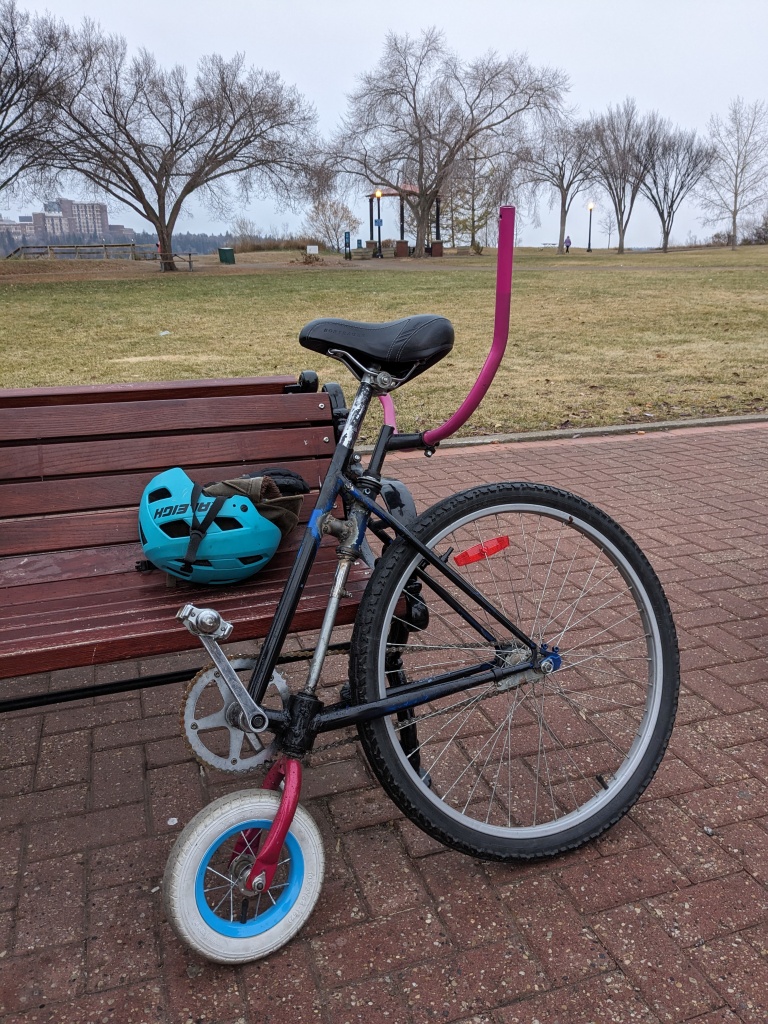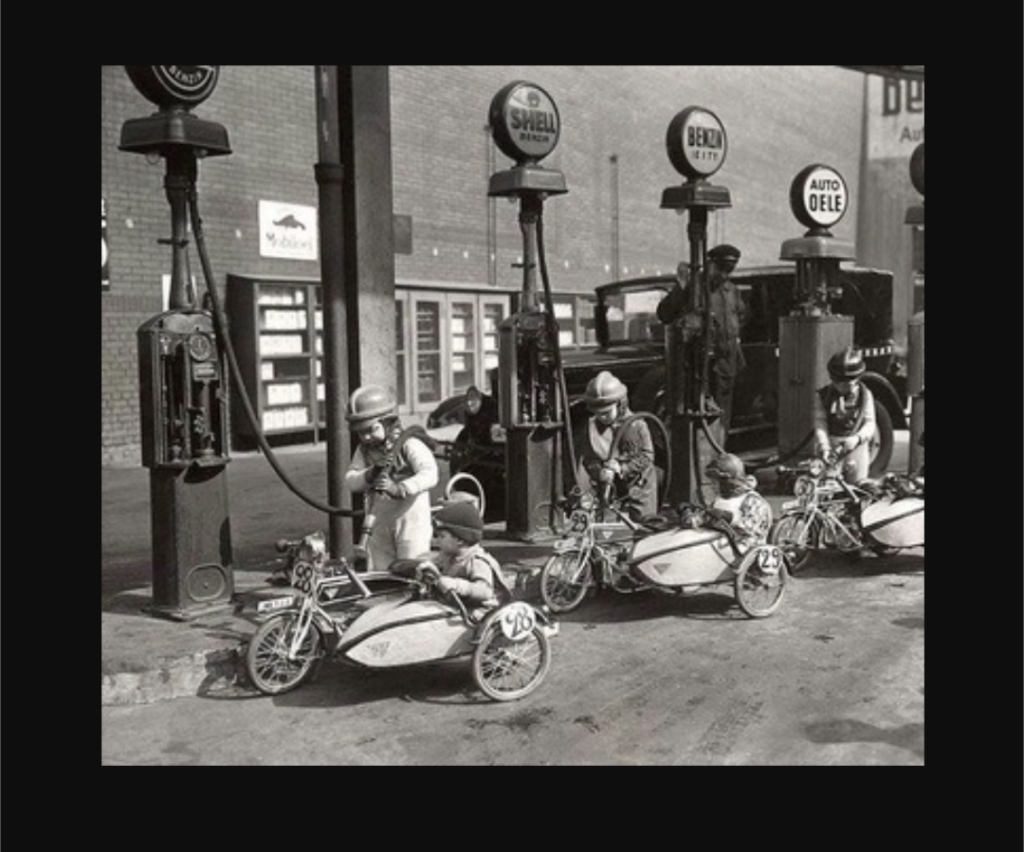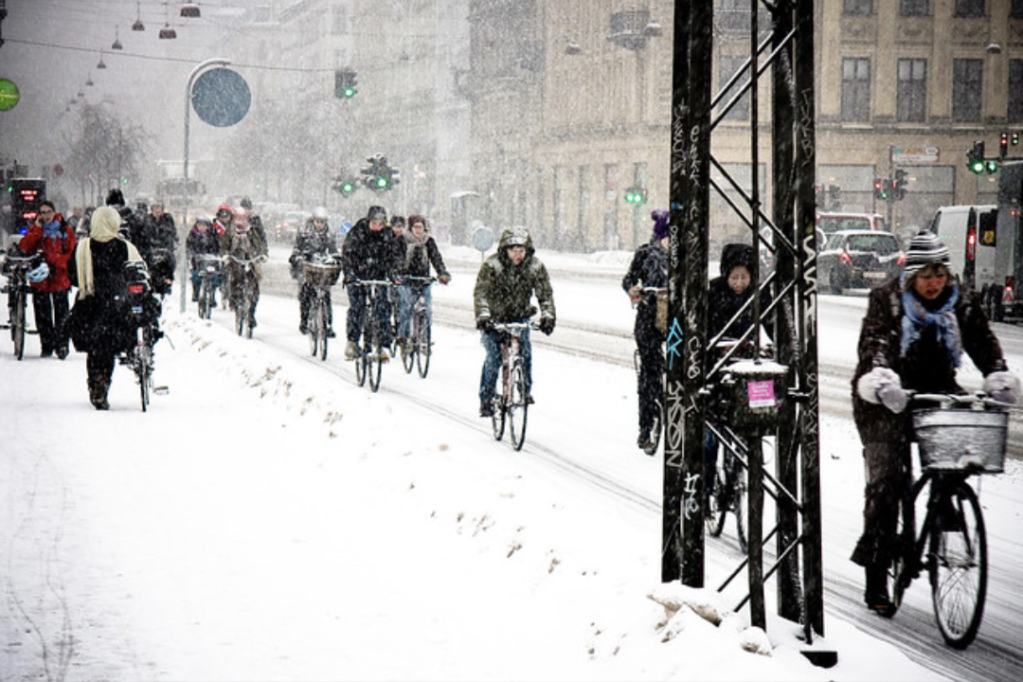Ok, bear with me; working through an idea.
The City of Edmonton’s urban and budgeting planners have estimated that to institute the bike transportation infrastructure needed to meet the city’s climate crisis, human well-being & municipal tax-affordability goals, will cost $200M (in 2022 dollars). It’s a very low price compared to other transportation infrastructure costs in the city’s budget.
But in the budget deliberations, only $100M was allocated for the 2023-2026 fiscal years.
So we have a shortfall of $100M over the next budget cycle (2023-26).
Funding bike-transportation infrastructure is a smart move on city council’s part.
Car-dedicated infrastructure (roads, parking, parking lots, road maintenance machinery, etc.) is a huge part of a municipal budget, and no matter how much is budgeted, it is always inadequate: cities have learned that building roads induces demand for more. It increases costs, risk, noise, and pollution rather than easing congestion or generating revenue. Car-infrastructure is ruinous for city budgets. Car-infrastructure is a disincentive to climate change mitigation. Car-infrastructure makes urban areas unpleasant. Taxpayers are never satisfied with what cities and municipal councils institute.
Bicycle infrastructure by contrast is cheaper to maintain. Bicycles don’t beat up the roads the way cars and trucks do. Bicycles don’t kick up particulates or create din the way cars do. Bicycle riders have better range of vision, fewer blind spots, than drivers, and they move at a slower speed, thus reducing collisions and dramatically reducing injuries and deaths. With bike transportation infrastructure, induced demand actually reduces risk, noise, pollution and costs to municipal budgets, and thereby to taxpayers.
So it’s in a city budget’s best interest to encourage the increase of bicycle use while reducing car use. But funding 50% is like riding half a bicycle. Doable, not optimal. What are a city’s options?

In Canada, municipal legislation gives cities property taxes, bylaws & zoning as their tools. Fairly limited options. Municipalities may not, for example, impose extra taxes on drivers using certain neighbourhoods, the way UK & EU cities have done to reduce cars & incentivize public transit or bike use.
So, WHAT IF the city used the prerogative over property taxation to assess a special “Climate Crisis Levy” on commercial properties dedicated to activities that enable car-use? WHAT IF the city dedicated all revenues from that extra levy to meeting the $100M shortfall?
Commercial properties, not residential properties. What kind of commercial properties? Low-hanging fruit are properties hosting gas stations, car dealerships, automotive repairs, auto-body shops, tire-sellers, vanity mufflers, car-washes, etc.
Of course, the property owners (landlords) would kvetch. Then they would pass on the levy-cost to the commercial operators leasing those properties. They, of course would raise their prices to their clientele, the citizens engaging in transportation choices that favour car-use, negatively impacting our environment, local quality of life, and collective municipal costs.
While building the piggy bank for the climate crisis-fighting infrastructure we need, ie: the missing $100M, the increased prices for car-fuel, car-repairs, etc, would create disincentive pressure on car use, whilst simultaneously ensuring the car-users pay for the costs they impose on the municipal budget.
City council could vote to make such a special assessment temporary – eg, until the bike network/active transportation infrastructure project is completed & paid for. That’s how the province of British Columbia funded the Vancouver Airport upgrade- through a temporary levy on every traveller transiting YVR. Or council might not. City council might, for example, use the levy to pay for a bike network, then dedicate any surplus to neighbourhood renewal, community gardens, parks, e-bike subsidies, free bikes for refugees, bike-taxis for seniors’ residences, or any other climate crisis mitigation and improved urbanism measures they choose.
Would a city like Edmonton do this? Councillor Aaron Paquette generously responded to my original tweet thread and pointed out that while this mechanism would work IF a city was isolated, municipalities are not isolates and may be competing with neighbouring municipalities for commercial land rents. Municipalities are therefore leery of chasing away property tax paying commerce. However, I pointed out, in the middle term, it is unlikely businesses like gas stations or tire warehouses will accept the major expense of relocating their business across municipal boundaries – their customers are local, and the requirements for environmental cleanup after quitting a site are costly and complicated. It’s a better business decision to just pass on the cost. If, over the long term, those businesses decided to change their business model, shift away from serving car-users, or if property owners become more reluctant to lease their land to car-serving business, that’s actually a positive for the city, which should prefer urban commerce which enhances a net-zero, circular economy.
Would the ‘municipal isolation’ concern be a problem, really? Wouldn’t other municipalities see the benefit of such a mechanism too? Wouldn’t this be an opportunity for mayor-to-mayor leadership and solidarity? Yes. But as Councillor Paquette points out, the Province might intervene, and this intervention could be counter-productive. This has happened in Alberta. On the other hand, municipal mayors have stood in solidarity and cooperated in lobbying and negotiations with provincial authorities in other circumstances. It could happen again.
What I like about this kind of solution is that it works subtly, to reduce the unrecognized subsidies municipal residents pay for drivers’ use of our tax-payer funded infrastructure, while funding the transition of our urban space without raising residential property taxes (making street parking un-free is a good idea too). It’s a polluter-pay mechanism, in which the ‘perverse incentive’ is one from which residents and the environment benefit, in the short-term as well as the long-term.
It would require a courageous, committed council, ready to incur the kvetchers’ temporary wrath. And let’s be clear -commercial property landlords are political campaign donors. They have influence. It would also require visionary leaders, willing to work with their counterparts in other municipal and provincial offices, and with businesses to be impacted. Some of those businesses might decide to change their business model –gas stations for example could again serve bicycle users (that’s probably inevitable)– all for the greater good.

Councillor Paquette points out that there is commitment on council. For example, they have supported a motion from Councillor Salvador for an environmental fund. Paquette also opines that change occurs at the pace the electorate is comfortable with, no faster. Probably so. But electors shift their thinking and their behaviours, as they hear new ideas, and experience new opportunities. Parisian mayor Anne Hidalgo demonstrated this when she pushed for a dramatic shift to bike lanes for Paris. Research by urbanists and transportation engineers show transition from motornormative, car-default urban-infrastructure can be swift, where people speak up, and political authorities risk bold decisions. Amsterdam is the obvious example. But Oulo, in far northern Finland, might be a better comparator for Edmonton. In Oulo, political decisions led to an extensive bike-transportation network of routes that are maintained all seasons, making Oulo the winterbiking capital of the world. That is, perhaps a better example for a city with one quarter of the year where snow and ice can impact cycling. Although, with climate change, Edmonton winters are seeming damper, so perhaps Copenhagen would be an example to emulate.

Either way, let’s make Edmonton the Amsterdam-Copenhagen-Oulo-Paris of Canada.
